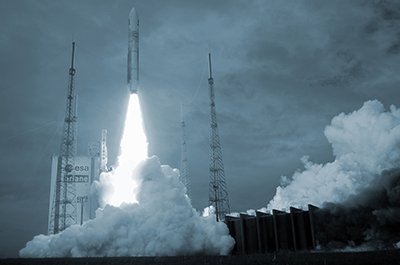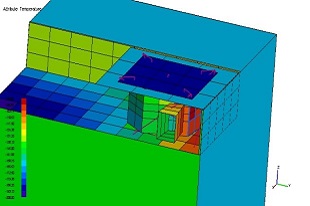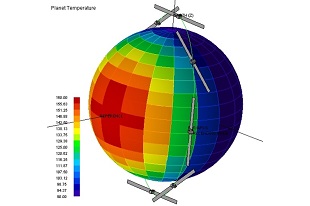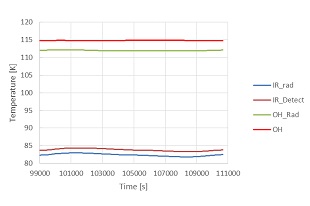
The JUICE (JUpiter ICy moons Explorer) mission is a large-class mission of ESA's "Cosmic Vision" program. The goal of the probe launched last April 14th at 14:14 (ECT) from the Kourou base in French Guiana is to study the Jovian system and, in particular, its moons: Callisto, Europa and, above all, Ganymede, satellites that it will reach in 2031. While Europa and Callisto will be observed only exploiting multiple close encounters called "fly-by", Ganymede will be observed in long orbital conditions. JUICE will be in fact the first space mission to orbit around a moon different from “our moon”.
One of the main payloads the probe is MAJIS (Moons And Jupiter Imaging Spectrometer), an imaging spectrometer operating in the wavelength range from 0.5 to 5.54 micrometres on two spectral channels, visible-near infrared 0.5-2.35 micrometres and infrared, 2.25-5.54 micrometres. This instrument was developed by a consortium with a French Principal Investigator, Francois Poulet of IAS in Paris, an Italian Co-Principal Investigator, Giuseppe Piccioni of INAF in Rome, and a collaboration from Belgium. The optical head is the Italian contribution to the instrument, manufactured by Leonardo S.p.A. in the Campi Bisenzio plant, under an industrial contract from ASI, the Italian Space Agency. The research group of the Department of Mechanical Engineering working at the MetroSpace Lab of Politecnico di Milano - Lecco Campus developed the thermomechanical design during the initial phase of the study, which began in 2012 with the "announcement of opportunities" by ESA.
Afterwards, the scientific team supervised the final design and manufacturing when it was committed to Leonardo. From an engineering point of view, MAJIS represents a technological challenge because of the passive cooling system of the infrared sensor, which must guarantee temperatures below 90 K. Moreover, the whole optical system must operate at temperatures below 140 K, despite being onboard a satellite operating at temperatures close to those on earth. Phase A investigations allowed defining the architecture of the thermo-mechanical system by determining the features of the two-stage cooling radiator, the thermal insulation systems, and the structures with thermal insulation and mechanical support functions. The research group of the Politecnico di Milano, thanks to an ASI grant, will stay active during the flight and operational phase of the mission. The refinement of the thermal model of the instrument, using the data collected during the cruise phase, will be at first performed to provide a tool supporting the observation planning. The opportunity of conducting accurate simulations of possible operational scenarios using a "digital twin" will allow the optimisation of the operation profiles to exploit the best thermal conditions, critical for a cryogenic instrument such as MAJIS, during the observation phases.



